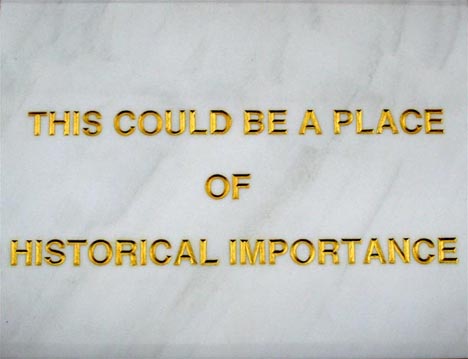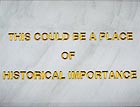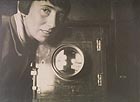
translated and summarized by: Liz Wollner-Grandville,
English summaries January 25 - February 6
Berlin - Paris
Partner-exchange at the start of the year
For the third consecutive time, and possibly for the last time, the galleries in Berlin are presenting a French program before they move on to Paris.
In the last two years, in addition to the Art Forum in the fall and the Gallery Weekend in April, another format was established in the Berlin Gallery scene - with its event character it seduces people to take part in a tour of 14 participating galleries. “Berlin-Paris” is the title of the German-French gallery exchange prompting associations with the exhibition curated by Werner Spies in 1978 at the Centre George Pompidou “Paris-Berlin 1900 – 1933”. Here not only German and French artists are presented, but programs and individual positions of the participating galleries. The project was initiated by French ambassador Bernard de Montferrand and was organized by Cedric Aurelle from the “Bureau des Arts Plastiques”.
In her gallery, Isabella Bortolozzi, who didn’t participate in the second year, definitely accommodated the most beautiful and startling exhibition –DADA was present with Kurt Schwitters and Hans Arp, not only in the form of Merz-collages and amoeboid sculptures, but also with puns, which, partly rendered in original recordings, let the visitor forget the museum patina and made the 1920’s and 1930s (and thereby the founding spirit of the artists) vivid. With the Gallery Natalie Seroussi, Bortolozzi took the opposite approach of 2009, when she invited the young galleries Balice Hertling and castillo/corrales – yet remained prone to experiments and the spirit.
Likewise, Sommer & Kohl presented a genealogy in both directions at “Berlin-Paris”. Last time the renowned Gallery Denise René, with its constructive, concrete and kinetic art was invited, now the gallery offered its rooms to the Institute of Hypocrisy, a project space operated by artists, which in itself offers a (collaborative) work by the artist Victor Boullet. Unfortunately the implementation in situ is less successful than the idea to deal with market-efficient methods in the art industry. In contrast: Gary Hill’s superb critical reflection of the art system in “Poor Man’s Guilt”, 2007, - here both the artist and the viewer are sanctioned and insulted for dealing with the system. His work is shown by the Gallery Barbara Thumm who is participating in the exchange for the first time this year - with In Situ / Fabienne Leclerc. As in the two preceding years, Medhi Chouakri invited the Gallery 1900–2000. The gallery presents classic works, such as those by Francis Picabia or Jean Dubuffet, on murals by John Armleder or Mathieu Mercier. While the choice of the couples is a good one and an image is created that definitely will be remembered, the murals are at risk, especially those by Gerwald Rockenschaub, to degenerate into decadent decoration.
Johann König chose an unusual partner: not a gallery, but the Parisian magazine Paradis. This is where in 2009 the same-named series by the photographer Juergen Teller was published for the first time, depicting the model Raquel Zimmermann and the actress Charlotte Rampling in an extremely unpretentious manner as nudes amongst the Louvre masterpieces, and which König is now presenting in large-format. In the entrance area of carlier/gebauer you are welcomed by Braco Dimitrijevic’s marble table, engraved with the words “This Could be a Place of Historical Importance”. The table is a “portable monument”, which could just as well have been mounted on a house in London’s Soho district in 1971 - or any other building that the artist happened to come across. Florent Tosin, a former employee of carlier/gebauer opened his own gallery in the Potsdamer Strasse just a few months ago. Michel Rein’s work is displayed here – last year he had exchanged his work with carlier/gebauer. This not only illustrates the dynamics of this project but also the spirit of partnership that seems to surpass the idea of competitiveness. This format functions much better than a fair - it offers the guests a significantly better opportunity to present themselves and has a much more pleasing atmosphere. It is not yet clear if the exchange will continue next year, as both Bernard de Montferrand as well as Cédric Aurelle are leaving Berlin in 2011.
The German galleries are present at the venues of their Parisian colleagues since January 28.
By Conny Becker
Opening hours and addresses can be found at: www.berlin-paris.fr
Wien Museum Karlsplatz
Trude Fleischmann – The self-assured eye
27.01.11 until 29.05.11
Nonchalant Vienna
Trude Fleischmann graduated from the photography class at the Graphische Lehr- und Versuchsanstalt in Vienna and, following a short intermezzo with the star photographer Madame d’Ora, she quickly advanced to the top portrait photographer of Vienna’s upper crust. She was famed for her double portraits of Adolf Loos and Peter Altenberg created in the Atelier Schieberth. She portrayed actors, dancers, composers and authors free of charge and, in turn, they served as the best advertisement for her work. Even young ladies and men who never rose to fame, were staged as a perfect media for a new, liberal and unbelievably relaxed young and sexy Zeitgeist.
Trude Fleischmann and her work is symptomatic for Vienna’s progressive culture scene of the First Republic. The new “eye” of the Bauhaus, as it manifested itself for example in Marianne Breslauer’s work shown just a short while ago in Berlin, was synthesized with elements of the more pleasing pictorialism to a more agreeable form of contemporary visual language without technical or formal experiments.
In 1923, Jewish-born Trude Fleischmann converted to Catholicism. She attempted to come to terms with the conditions of the Ständestaat by selling travel reports and Austrian landscape photographs to magazines. Later she immigrated to New York and successfully continued her career.
The Wien Museum owns the largest collection of Fleischmann's works - which it bought from Max Ermer in 1936. Yet a large number of her works disappeared after her emigration. The Fleischmann photo exhibition, with its diverse contexts of cultural interrelations and supplemented by prints from private collections, is well worth seeing.
By Iris Meder
Wien Museum Karlsplatz
1040 Vienna, Karlsplatz
Tel: +43 1 5058747 0
Fax: +43 1 5058747 – 7201
www.wienmuseum.at
Opening hours: Tue – Sun 10 a.m. – 6 p.m.
ZKM – Zentrum für Kunst und Medientechnologie
Elmgreen & Dragset. Celebrity – The One & The Many
07.11.10 until 27.03.11
Sparkly and Seltzers
No doubt, Asian TV-program, wok and rice cooker, this must be Family Wang’s kitchen. Next door, on the ground floor, you can peep into a bachelor household’s vaguely charming living room, where nicotine and alcohol played a significant role - does Anton Pilz live here? In one of the upper floors one can identify Britta Schmidt’s treatment room, where – as the signboard at the entrance promises - all sorts of massages are offered.
Ten parties live in the prefabricated building and after having read the names on the doorbells, one begins to assign them floor by floor, press one’s nose against the windows or make use of the readily prepared binoculars on the two upper floors.
Subsidized housing as a large-scale sculpture, fictitious interior as a narrative window. And for heavens sake, why do we concentrate on such irrelevant lifestyle worlds? In the midst of the atrium of the ZKM in Karlsruhe, the Scandinavian artist duo Elmgreen & Dragset created a four-storey prefabricated building. While one moved amidst collector’s rooms at the last Biennial in Venice, possibly considering the purchase of one of the households - all of a sudden one is interested in virtually bourgeois unglamorous existences.
Only a few steps separate the prefabricated building from a private ballroom. The bronze waiters - a waitress, wearing an apron and a bonnet, and the butler, making sure that there are no party crashers. Merely the son of the house, whose portrait hangs above the mantel, cowers beneath it. The fireplace is just as cold as the emotional environment of the young boy in his school uniform, that’s the message.
The Prada showroom in the desert, the trailer, tearing a crater in the luxurious floor of Vittorio Emanuele’s Gallery in Milan or the gold-plated equestrian rider of a young boy on a rocking horse, which – as recently announced – will decorate the Fourth Plinth at London’s Trafalgar Square in the Olympic year 2012. The majority of Elmgreen & Dragset’s are characterized by their poignant humour. However, at the ZKM the artist duo appears to have been caught up in their own assiduously exhibited clichés. What do the prefabricated building and the VIP party have in common? We must stay outside. But did we want to enter in the first place?
By Daniela Gregori
ZKM – Zentrum für Kunst und Medientechnologie
76135 Karlsruhe, Lorenzstrasse 19
Tel.: +49 721 8100 0
Email: info@zkm.de
www.zkm.de
Opening hours: Wed - Fri, 10 a.m. 6 p.m., Sat, Sun 11 a.m. - 6 p.m.
Galerie Ruzicska
Francois Morellet
22.1.11 until 5.3.11
The esprit of geometry
If someone has not climbed very high, he will naturally not fall abysmally low. In matters concerning careers, art, and market for example. The art of minimal form - with its maximum image effect, and how concrete art and its transatlantic sister minimal art stood up against us in the last eight decades - was never the unchallenged leader of international art charts. Too unspectacular and bloodless, apparently far from dramatic and without gestures, never besmirched by ego tricks and manic and diverse trips, more conceived than homemade, too aloof, cool, cold and mellow to meet the taste of the masses. Concrete art was, and is, art for and by a selective group of insiders, a more or less elite clique of experts.
Francois Morellet is one of these artists who never really belonged to the “concrete ones” in their “slippers written in lower case” (G. Grass). In yet another year of special birthdays and anniversaries, the grand seigneur of French contemporary art is more or less enthusiastically welcomed on the eve before the great retrospective at the Centre George Pompidou in Nikolaus Ruzicska’s gallery in Salzburg with an overview of selected works spanning the last 25 years.
In a show, in which Morellet turns out to be an entrepreneur of simple forms, as a virtuoso juggler on the terrain of a geometric-systematic art and whose sometimes too serious dogmas are extended by the always readable spirals of humor. His typical esprit flares up in an absolutely “snide humor”-free zone, which positions the liberal, yet mannered play with elements, the festive ado of the elegant gallantries, closer to rococo-like etiquette and noblesse.
Discretely behind closed doors of precisely set-out forms, such as the eight-fold broken arch of the circle, the barely suppressed smirk of geometry (about itself?) can be heard. And the neon works created in the last years let their souls drift into the warmth of the exhibition space.
But the truly exquisite parts of this exhibition are the specially conceptualized and realized “defigurations”, based on classic showpieces from Austrian collections. The protagonists of the emphatic or idyllic scenes (by Caravaggio, Waldmüller) are effectively substituted by untreated canvases, covered and thereby extinguished. What remains is the now disclosed secret of composition and construction. Is this the geometry of poetry? Or was it the other way around: “I love the stringency of geometry, but I much prefer to huddle it all up…”.
By Stephan Maier
Galerie Ruzicska
5020 Salzburg, Falstauergasse 12
Tel: +43 662 630 360
Fax: + 43 662 630 60
Email: Salzburg@ruzicska.com
www.ruzicska.com
Opening hours: Tue – Fri 10 a.m. – 6 p.m., Sat 10 a.m. – 2 p.m.
Mehr Texte von translated and summarized by: Liz Wollner-Grandville


 Teilen
Teilen



